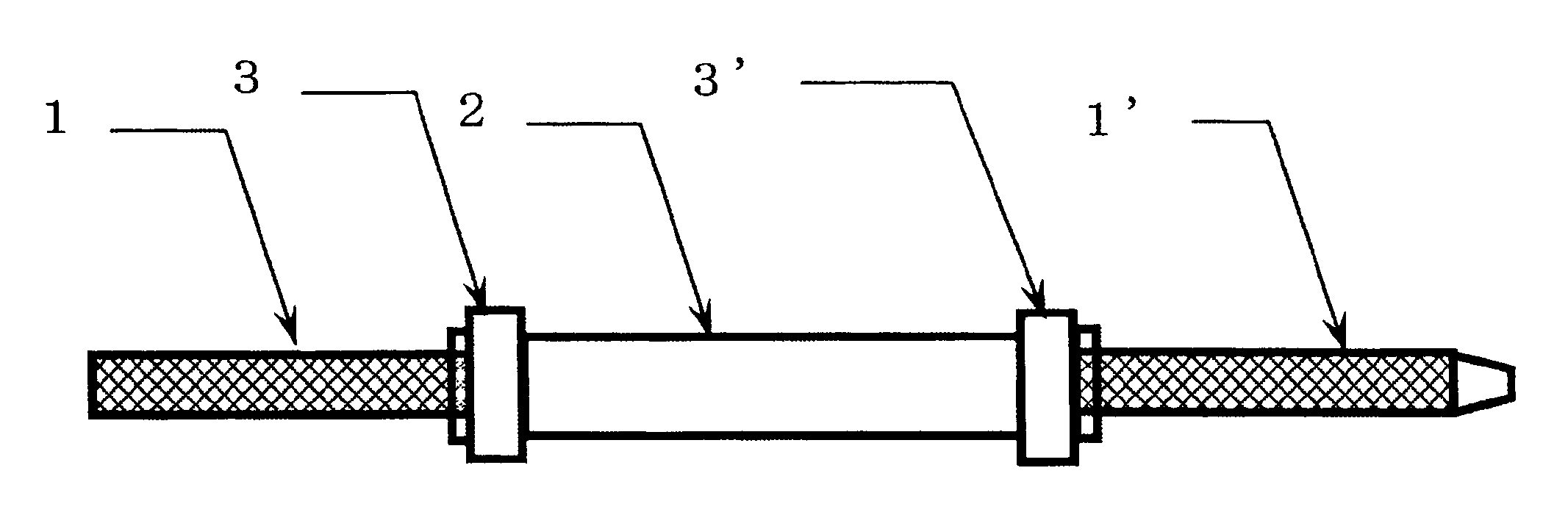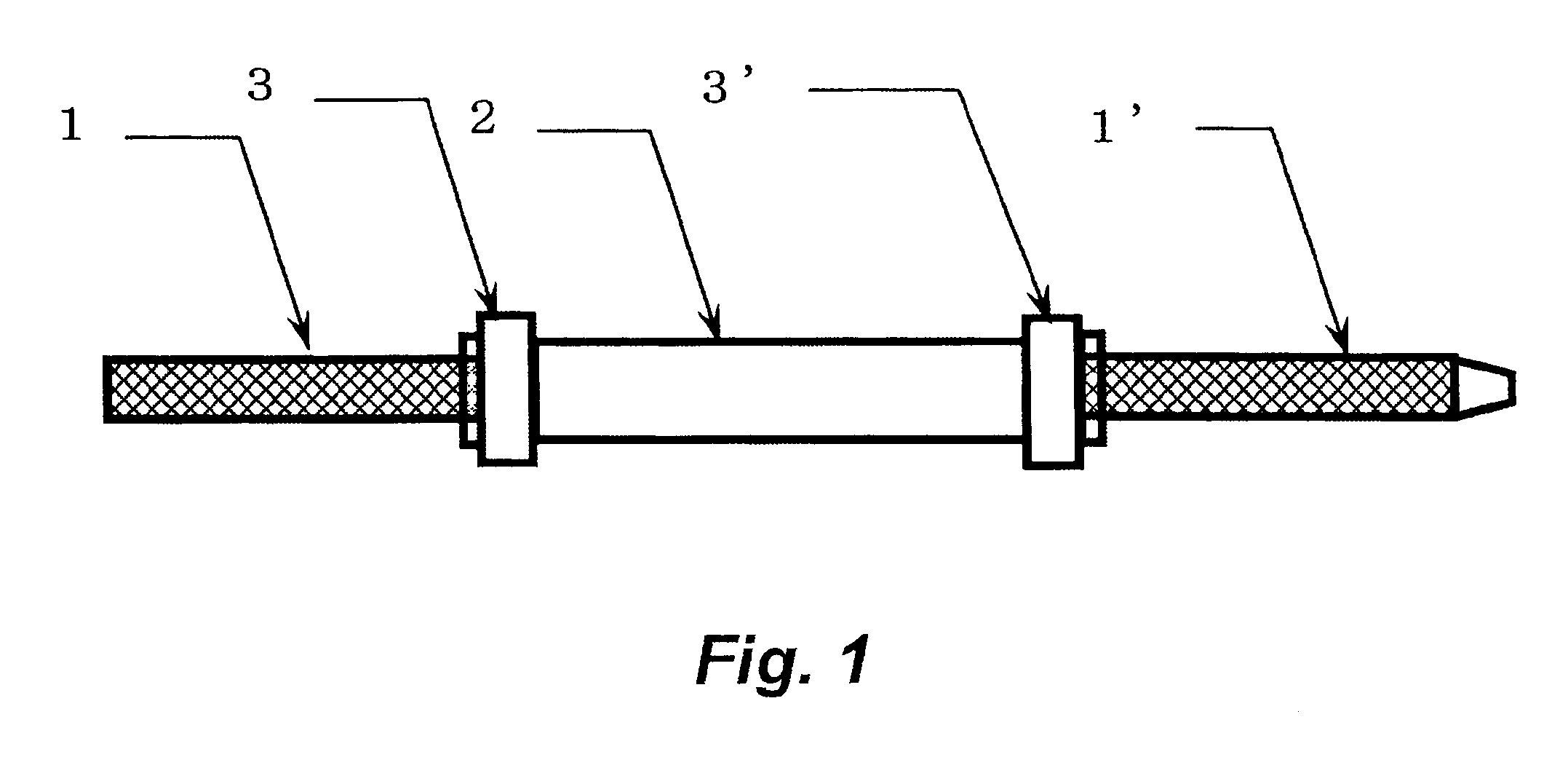Process for producing mixture of two-liquid mixing type curable resin and process for producing hollow-fiber membrane filter element
a technology of curable resin and two-liquid mixing, which is applied in the direction of membranes, surface layering apparatuses, manufacturing tools, etc., can solve the problems of partial uneven mechanical strength after curing, uneven cured state of adhesives, and insufficient mixing, and achieve good cured product free
- Summary
- Abstract
- Description
- Claims
- Application Information
AI Technical Summary
Benefits of technology
Problems solved by technology
Method used
Image
Examples
examples
[0079]Examples of the present invention will hereinafter be described. It should however be borne in mind that the present invention is not limited by them.
[0080]Two-liquid mixing type curable resins (urethane resins) used in Examples and Comparative Examples are shown in Table 1.
(Measuring Method of Pot Life)
[0081]A base and a curing agent adjusted to the temperature described in Table 1 were weighed at a predetermined weight ratio to give a total weight of 100 g. After mixing for 60 seconds and deaeration for 30 seconds in a rotary mixer / deaerator (“HYBRID MIXER HM-500”, trade name; product of KEYENCE CORPORATION), the viscosity of the resulting mixed liquid was measured with time by a digital rotary viscometer (“VISCO BASIC PLUS”, trade name; product of FUNGILAB S.A) and the period of time until the viscosity reached 10 Pa·s was determined. The period of time until the viscosity reached 10 Pa·s after the mixing was started was defined as a pot life. It is to be noted that during ...
examples 1 to 5
[0086]As described in Table 2, two static mixers were connected in series via a non-stirring portion having an individual volume and a pressure of 0.6 MPa was applied to feed a mixed liquid.
[0087]The static mixers (“DSP-MXC13-32”, trade name) each has an inner diameter of 13 mm, houses 32 mixing elements therein, and has an inner volume of 32 ml. As the non-stirring portion, a pressure hose (“Tetron blade hose”, trade name) having a size as shown in Table 2 was used.
[0088]The mixture obtained was cured for 60 minutes in a temperature atmosphere shown in Table 2, followed by further curing for 8 hours at 50° C.
[0089]After the temperature was returned to room temperature (23° C.), the cured state of the resin was evaluated. The cured state of the resin is shown in Table 2. Any of the resins showed good cured state without stickiness or hardness unevenness on the surface thereof.
examples 6 and 7
[0090]In a similar manner to Example 1 except that the two static mixers were connected in series by using a pressure hose (non-stirring portion) having a size as shown in Table 2, a cured product of the resin was obtained. The cured state of the resin is shown in Table 2.
PUM
| Property | Measurement | Unit |
|---|---|---|
| diameter | aaaaa | aaaaa |
| viscosity | aaaaa | aaaaa |
| particle size | aaaaa | aaaaa |
Abstract
Description
Claims
Application Information
 Login to View More
Login to View More - R&D
- Intellectual Property
- Life Sciences
- Materials
- Tech Scout
- Unparalleled Data Quality
- Higher Quality Content
- 60% Fewer Hallucinations
Browse by: Latest US Patents, China's latest patents, Technical Efficacy Thesaurus, Application Domain, Technology Topic, Popular Technical Reports.
© 2025 PatSnap. All rights reserved.Legal|Privacy policy|Modern Slavery Act Transparency Statement|Sitemap|About US| Contact US: help@patsnap.com



